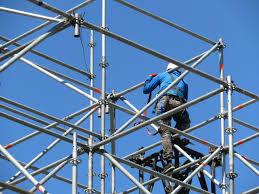Oct . 11, 2024 06:39 Back to list
timber beam h20
Timber Beam H20 An Innovative Solution for Modern Construction
In the world of construction, the quest for effective and sustainable building materials continues to drive innovation. Among these materials, timber has emerged as a favored choice due to its renewable nature, aesthetic appeal, and versatility. One of the most significant advancements in timber engineering is the “H20” timber beam, a product that perfectly blends modern technology with traditional materials.
What is an H20 Timber Beam?
H20 timber beams, also known as I-beams or composite beams, are engineered wood products designed to provide superior structural performance. They are made from high-quality timber flanges and a web of oriented strand board (OSB) or plywood, creating a lightweight yet exceptionally strong component. The “H” in H20 refers to the cross-sectional shape of the beam, resembling the letter ‘H’. This design allows for large spans and high load-bearing capacity, making them ideal for various construction applications.
Advantages of H20 Timber Beams
One of the primary benefits of H20 timber beams is their strength-to-weight ratio. Unlike traditional solid timber beams, H20 beams are significantly lighter without sacrificing strength, which results in easier handling and reduced transportation costs. Their lightweight nature also alleviates some of the structural loads on foundations, allowing for greater design flexibility.
Moreover, H20 timber beams exhibit excellent dimensional stability. They are less prone to warping, twisting, or shrinking compared to conventional solid timber, which means that they maintain their shape over time. This feature is crucial in construction, where precision is key. Builders can rely on H20 beams to provide consistent support throughout the lifespan of a structure.
Sustainability is another significant advantage of using H20 timber beams. Timber is a renewable resource, and when sourced from responsibly managed forests, it has a low environmental impact compared to conventional building materials like steel and concrete. The production process for H20 beams also consumes less energy, contributing to their overall sustainability profile. Additionally, timber sequesters carbon dioxide, helping to mitigate climate change effects.
timber beam h20

Applications of H20 Timber Beams
H20 timber beams are incredibly versatile and can be employed in various construction applications, including residential, commercial, and industrial projects. They are often used in floor and roof systems, where long spans are required without the need for excessive intermediate supports. This capability allows architects and builders to create open, airy spaces that are highly sought after in modern design.
In multi-story buildings, H20 beams can significantly reduce the weight of the structural system, allowing for taller designs without an increase in foundation costs. Their use in prefabricated construction is also on the rise, where components are manufactured off-site and assembled quickly on location, improving project timelines and reducing labor costs.
Installation and Maintenance Considerations
While H20 timber beams offer several advantages, proper installation is crucial for achieving optimal performance. Builders must ensure that the beams are adequately supported, aligned, and fastened according to manufacturer specifications. Additionally, regular inspection is recommended to identify any potential issues arising from moisture exposure, as with any timber product.
In terms of maintenance, H20 beams require minimal upkeep compared to traditional materials. They can be treated with protective coatings to enhance their resistance to moisture and pests, ensuring longevity.
Conclusion
In conclusion, H20 timber beams represent a significant advancement in construction technology, marrying the natural beauty of timber with modern engineering principles. They offer a sustainable, robust, and flexible solution for a wide range of building applications. As the construction industry continues to evolve, the demand for innovative materials like H20 beams is likely to grow, paving the way for a more sustainable and efficient future in construction. Whether for residential homes or large commercial projects, H20 timber beams are proving to be an invaluable asset in the modern builder’s toolkit.
-
High-Quality U Head Jack Scaffolding – Reliable Scaffolding Jack Head Manufacturer & Factory
NewsJul.08,2025
-
High-Quality I Beam H20 Leading Timber Beam H20 Material Factory, Exporters & Manufacturers
NewsJul.08,2025
-
High-Quality Powder Coating Steel Formwork - Durable & Corrosion Resistant Solutions
NewsJul.07,2025
-
Inclined Column Formwork Supplier – Durable & Precise Solutions for Unique Structures
NewsJul.07,2025
-
High-Quality Water Stop Solutions Trusted Water Stop Company & Suppliers
NewsJul.07,2025
-
High-Quality Formwork Material Supplier Reliable Manufacturer & Factory Solutions
NewsJul.06,2025